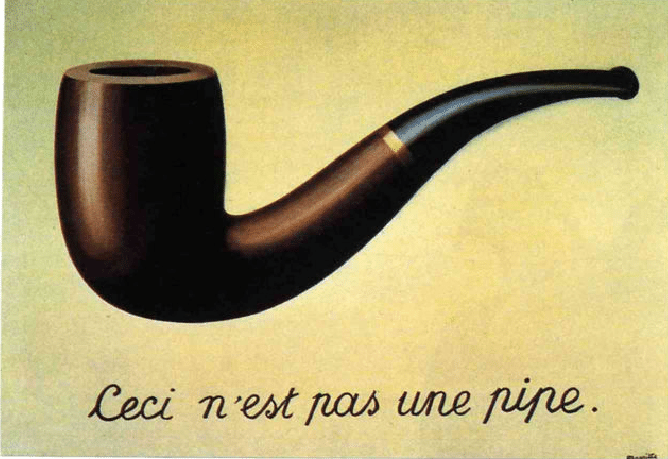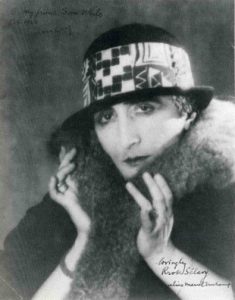By Miles Meagre

‘Like the other artists and poets associated with the Surrealist movement, Magritte sought to overthrow what he saw as the oppressive rationalism of bourgeois society. His art during these essential years is at times violent, frequently disturbing, and filled with discontinuities. He consistently interrogated conventions of language and visual representation, using methods that included the misnaming of objects, doubling and repetition, mirroring and concealment, and the depiction of visions seen in half-waking states-all of them devices that cast doubt on the nature of appearances, both in the paintings and in reality itself.’
I have for some time been struck by the emanation of ‘trans’ identity in recent years and the long history of assuming a gender, even temporarily for effect. This flirtatiousness with gender identity stems from the dawn of civilisation, seemingly religious as much as recreational. It transitioned between the votive and the distracting.
Doubtless, there has always been a melding, drama and on to abandonment. I felt this myself as soon as I put on a mask and joined a huge crowd performing a ritual possibly as old as Homer, a clear appeal to Poseidon to place good fortune on groups of huge hairy fisher folk in budget saloon gal frocks in flashy satin and enough rouge to keep a few battalions of drag artists going for a century. Could this possibly be what St Paul witnessed nearly two millennia ago by the shores of the eastern Mediterranean?
‘ For this cause God gave them up unto vile affections: for even their women did change the natural use into that which is against nature:
And likewise also the men, leaving the natural use of the woman, burned in their lust one toward another; men with men working that which is unseemly, and receiving in themselves that recompence of their error which was meet.’
This is taken by some as Christian authority for the condemnation of homosexuality.
Yet fail to read on …
‘Therefore thou art inexcusable, O man, whosoever thou art that judgest: for wherein thou judgest another, thou condemnest thyself; for thou that judgest doest the same things.
But we are sure that the judgment of God is according to truth against them which commit such things.
And thinkest thou this, O man, that judgest them which do such things, and doest the same, that thou shalt escape the judgment of God?’ (Romans 1:26-27 & 2: 1-3)
Always the details. I leave these to the scholars.
Perhaps, St Paul, like me, thought it all a bit silly, me and them? I searched in vain that night for women who might be swapping roles but found only dreary Germans and a lovely Swedish couple who offered a way back to normal street.
Jump forward two millennia and the ‘safe space’ provided by art (or the well off) produces a flowering of cross dressing, always performative. In Europe the First World War crushed the idea of a canon in the arts; while young men were being blown to bits in muddy fields a group decided that progress in the visual arts by the avant garde wasn’t going nearly fast enough. The exiles and draught dodgers in Zurich centred on the Cabaret Voltaire from 1916 coalesced around the destructive impulse directed at ‘culture’. Interestingly, and definitively in terms of gender experimentation, the results were performance first and visual a poor relation. To make the point Marcel Duchamp, formerly a pedestrian Cubist and euhemerist, found a men’s urinal and signed it ‘R. Mutt’. The art was in the thought not artistry.
Duchamp abandoned ‘authenticity’ in favour of artificiality. He invented a female persona – Rrose Sélavy – as if to emphasise the point about the act of creativity residing in the self. ¹

Cross dressing or ‘trouser roles’ was common in theatre and opera in previous centuries when females were banned from taking to the stage as such. So from its origins, gender switching was a product of performing and the phenomenon of ‘suspension of disbelief’, where spectators (and performers?) willingly hold two ideas in their minds at the same time. So there it remained, a product of a rentier class itch, popping up in popular form as comedy or pantomime, roots lost in time.
The avant garde switched back and forth after Dada, absorbed those of its developments – objet trouvé – to other increasingly hackneyed purposes – nothing fades faster than fashion and nothing domesticates rebellion than repetition.² But gender ambiguity had yet to find its high heels.
Jump forward, so to speak, and the expansion of this obscure form of artistic expression of an underground fetish unwinds in popular culture, particularly popular music and the development of a queer identity post reforms to homophobic laws in the west in the 1960s. The traditional safe space of the performing arts for gay men expanded into everyone’s listening and viewing. It traversed from Pop Art to Pop music and gender bending was soon a thing.
In the Future everyone will be famous for fifteen minutes – Andy Warhol
So, as with much else in the 21st century, rebel art in the early 20th century gave us the phenomenon of the ‘influencer’, someone famous for an effect. The corruption of the meaning of talent means when anyone can be an artist so comes the problem of standing out in the crowd. When I was at art school we did as a matter of course but were far fewer then. By the time I left and got a job, everyone under 20 was looking like an art student regardless. Where next? Art was anything and nothing. The field was huge by the turn of the century. Some of the clever players realised the combination of Warholian oddity and fashion might be enough. You were part of the art; then all of it.
Extremists altered their own physiques to get noticed; one canned his own excrement, another cut bits off his own body. Thankfully it proved to be a bit easier if you swopped your clothes. The taboos have almost all gone now. Men dressed as the kind of ‘women’ as James Baldwin wrote, ‘no man would want’, get invitations into our junior schools. After paedophilia as an art form … I dare not think.



